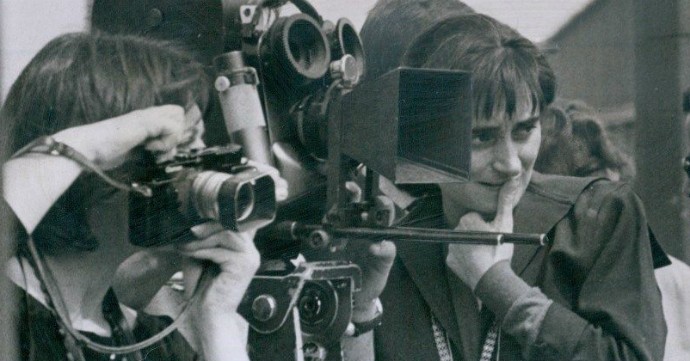
“Any society that is silencing its women has no future.” – Hafsat Abiola
“Media images contribute greatly to how we think about ourselves in relation to others. When marginalized groups in society are absent from the stories a nation tells about itself, or when the media images are rooted primarily in stereotype, inequality is normalized and is more likely to be reinforced over time through our prejudices and practices.” – Dawn Porter, director of Gideon’s Army
“When, however, one reads of a witch being ducked, of a woman possessed by devils, of a wise woman selling herbs, or even of a very remarkable man who had a mother, then I think we are on the track of a lost novelist, a suppressed poet, of some mute and inglorious Jane Austen, some Emily Bronte who dashed her brains out on the moor or mopped and mowed about the highways crazed with the torture that her gift had put her to. Indeed, I would venture to guess that Anon, who wrote so many poems without signing them, was often a woman.” ― Virginia Woolf, A Room of One’s Own
At last year’s Sundance Film Festival, more than 40% of the documentaries screened were directed or produced by women, though this is not the industry norm. These numbers dwindle when the catalog is expanded beyond the mountains of Park City. Unlike the absence of women from the lineage other art forms that Virginia Woolf implies in A Room of One’s Own, the voices of female filmmakers are rightfully an essential part of film history and have been heralded all the way back to Leni Riefenstahl through Agnès Varda, Shirley Clarke, Barbara Kopple, Naomi Kawase and a lengthy list of other incredible artists who’ve embraced their femininity as an asset to challenge the world around them and push cinematic and cultural boundaries by obliterating expectations of effeminate chastity.
Carrying on the documentary traditions of their directorial foremothers, female filmmakers today are forging their own paths to cinematic truth by excavating issues ranging from family and child development to nature preservation, aging, and the list goes on, all with sharp intellectual engagement and a natural maternalism, yet this natural affection for their subjects does not define them as artists. Rather, they wield it as an additional dimension of expression that enriches their creative vision with something uniquely female – something cinemas everywhere could always use a little more of.
These six films, each politically poignant and deeply emotional works, were directed by female filmmakers currently working today.
Stories We Tell (Sarah Polley)
A highly original documentary that explores how we construct our own reality through stories. Sarah Polley’s family and friends weave different narratives into a complex portrait of her mother who died when Sarah was eleven.
The Crash Reel (Lucy Walker)
U.S. champion snowboarder Kevin Pearce takes a near-fatal crash. This is the story of his recovery, which exposes the irresistible but potentially fatal appeal of extreme sports.
Brooklyn Castle (Katie Dellamaggiore)
Tells the stories of five members of the chess team from an inner city junior high school that has won more national championships than any other in the country, and follows the challenges these kids face in their personal lives as well as on the chessboard.
Advanced Style (Lina Plioplyte)
Based on Ari Seth Cohen’s famed blog of the same name, this documentary paints intimate and colorful portraits of seven independent, stylish New York women aged 62 to 95 who are challenging conventional ideas about beauty, aging, and Western’s culture’s increasing obsession with youth.
Blackfish (Gabriela Cowperthwaite)
The story of Tilikum, a performing killer whale that killed several people while in captivity. The film shows just how nature can get revenge on man when pushed to its limits.
Manufactured Landscapes (Jennifer Baichwal)
An unconventional film told through the spectacular, large-scale photos by Edward Burtynsky as he visits ‘manufactured landscapes’ – quarries, recycling yards, factories, mines, dams – in China and beyond